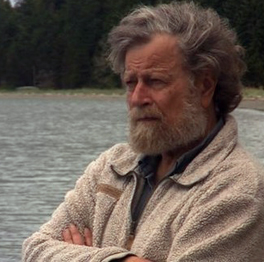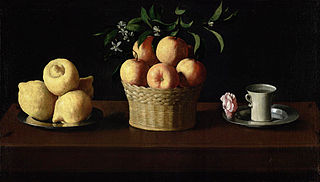Related Research Articles
"Pange lingua gloriosi corporis mysterium" is a Medieval Latin hymn attributed to Saint Thomas Aquinas (1225–1274) for the Feast of Corpus Christi. It is also sung on Maundy Thursday during the procession from the church to the place where the Blessed Sacrament is kept until Good Friday. The last two stanzas are sung at Benediction of the Blessed Sacrament. The hymn expresses the doctrine that the bread and wine are changed into the body and blood of Christ during the celebration of the Eucharist.

Jakob Böhme was a German philosopher, Christian mystic, and Lutheran Protestant theologian. He was considered an original thinker by many of his contemporaries within the Lutheran tradition, and his first book, commonly known as Aurora, caused a great scandal. In contemporary English, his name may be spelled Jacob Boehme; in seventeenth-century England it was also spelled Behmen, approximating the contemporary English pronunciation of the German Böhme.

Morten Johannes Lauridsen is an American composer. A National Medal of Arts recipient (2007), he was composer-in-residence of the Los Angeles Master Chorale from 1994 to 2001, and is the Distinguished Professor Emeritus of Composition at the University of Southern California Thornton School of Music, where he taught for 52 years until his retirement in 2019.
Latria or latreia is a theological term used in Catholic theology and Eastern Orthodox theology to mean adoration, a reverence directed only to the Holy Trinity. Latria carries an emphasis on the internal form of worship, rather than external ceremonies.
Magnum is a Latin word meaning "great".

Sacred mysteries are the areas of supernatural phenomena associated with a divinity or a religious belief and praxis. Sacred mysteries may be either:
- Religious beliefs, rituals or practices which are kept secret from the uninitiated.
- Beliefs of the religion which are public knowledge but cannot be easily explained by normal rational or scientific means.

O magnum mysterium is a responsorial chant from the Matins of Christmas.
The Memorial Acclamation is an acclamation sung or recited by the people after the institution narrative of the Eucharist. They were common in ancient eastern liturgies and have more recently been introduced into Roman Catholic, Anglican, Lutheran, and Methodist liturgies.
"The mystery of faith" and "a mystery of faith" are phrases found in different contexts and with a variety of meanings, either as translations of Greek τὸ μυστήριον τῆς πίστεως or Latin mysterium fidei, or as independent English phrases.
Sven Fredrik Johannes Sixten is a Swedish composer, cathedral organist and conductor. Sixten was born in Skövde, Sweden. He earned his Bachelor of Arts (1986) at the Royal College of Music, Stockholm. He studied composition with Professor Sven-David Sandström and is now recognized as one of Sweden's best-known composers of church music. He is published at all major publishing houses in Sweden.
Numinous is a term derived from the Latin numen, meaning "arousing spiritual or religious emotion; mysterious or awe-inspiring." The term was given its present sense by the German theologian and philosopher Rudolf Otto in his influential 1917 German book The Idea of the Holy. He also used the phrase mysterium tremendum as another description for the phenomenon. Otto's concept of the numinous influenced thinkers including Carl Jung, Mircea Eliade, and C. S. Lewis. It has been applied to theology, psychology, religious studies, literary analysis, and descriptions of psychedelic experiences.
Mysterium fidei may refer to:
Mysterium Fidei is an encyclical letter of Pope Paul VI on the Eucharist, published in September 1965.
Polyphony is a small English choir formed by Stephen Layton for one particular concert put on in King's College, Cambridge in 1986. They have released many critically acclaimed recordings, the most recent of which is Esenvalds - Passion & Resurrection. They record and perform a wide range of music mainly on Hyperion Records. Every year they perform Handel's Messiah and Bach's St John Passion in St John's Smith Square to sell-out audiences. Many of their recordings have been Gramophone editor's choice.
Mysterium Paschale. The Mystery of Easter is a 1969 book by the Swiss theologian and Catholic priest Hans Urs von Balthasar. The original German edition was published by Benziger Verlag, Einsiedeln. In 1983 it was reprinted by St. Benno-Verlag, Leipzig, including additions made to the second French edition Pâques le mystère, copyright 1981 by Les Edition du Cerf, Paris. The first English translation with an Introduction by Aidan Nichols, O.P., was published in 1990.

Still Life with Lemons, Oranges and a Rose is an oil-on-canvas painting by Baroque Spanish artist Francisco de Zurbarán completed in 1633. It is currently displayed at the Norton Simon Museum in Pasadena, California as part of its permanent collection. It is the only still life signed and dated by him and is considered a masterwork of the genre.

Marcus Nicolay Paus is a Norwegian composer and one of the most performed contemporary Scandinavian composers. As a classical contemporary composer he is noted as a representative of a reorientation toward tradition, tonality and melody, and his works have been lauded by critics in Norway and abroad. His work includes chamber music, choral works, solo works, concerts, orchestral works, operas, symphonies and church music, as well as works for theatre, film and television. Paus is regarded as "one of the most celebrated classical composers of Norway" and "the leading Norwegian composer of his generation."
O magnum mysterium (1569) is a six-part motet by Giovanni Pierluigi da Palestrina, based on the responsorial chant of the same name, and was written for the celebration of Christmas. The piece is intended to express the joy and awe that was felt by the shepherds as they celebrated and worshiped the Christ-child in the manger on Christmas Eve. Palestrina took the text for this piece from the first half of the third and fourth Responsories of Matins on Christmas Day. The text has been set many times by numerous composers, such as Palestrina, Poulenc, Lauridsen, and Morales.

O magnum mysterium is a motet for choir a cappella by Morten Lauridsen. He set the text of "O magnum mysterium", a Gregorian chant for Christmas, in 1994. The composition, performed and recorded often, made Lauridsen famous. It was described as expressive ethereal sounds in imperturbable calmness.
O magnum mysterium is a responsorial chant from the Matins of Christmas.
References
- ↑ Lauridsen, Morten (2009-02-21). "It's a Still Life That Runs Deep". wsj.com. Wall Street Journal. Retrieved 2022-08-24.
The Latin text for the Christmas Day matins responsory, "O Magnum Mysterium," also celebrates the Virgin Mary as well as God's grace to the meek